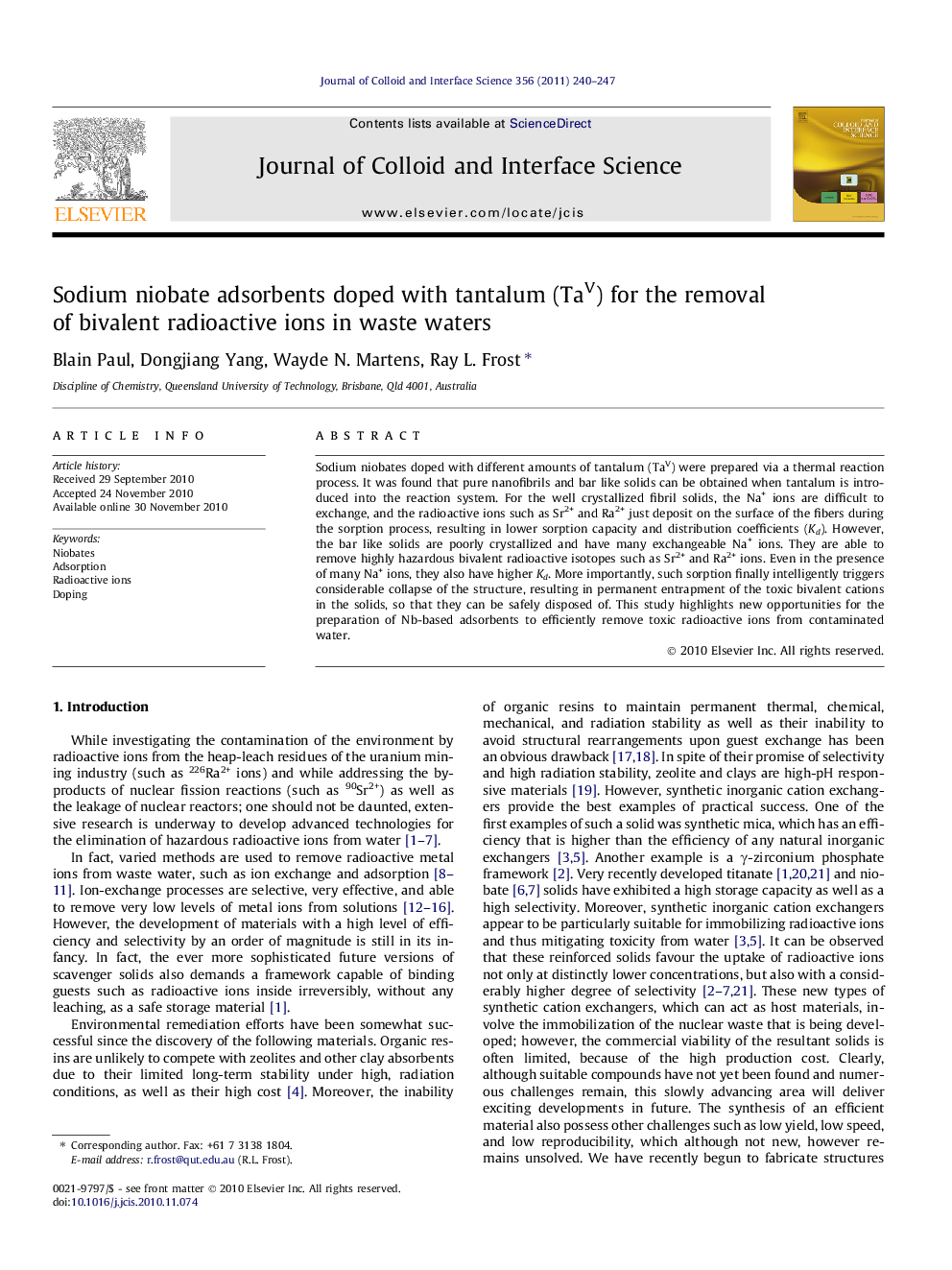| کد مقاله | کد نشریه | سال انتشار | مقاله انگلیسی | نسخه تمام متن |
|---|---|---|---|---|
| 608728 | 880607 | 2011 | 8 صفحه PDF | دانلود رایگان |

Sodium niobates doped with different amounts of tantalum (TaV) were prepared via a thermal reaction process. It was found that pure nanofibrils and bar like solids can be obtained when tantalum is introduced into the reaction system. For the well crystallized fibril solids, the Na+ ions are difficult to exchange, and the radioactive ions such as Sr2+ and Ra2+ just deposit on the surface of the fibers during the sorption process, resulting in lower sorption capacity and distribution coefficients (Kd). However, the bar like solids are poorly crystallized and have many exchangeable Na+ ions. They are able to remove highly hazardous bivalent radioactive isotopes such as Sr2+ and Ra2+ ions. Even in the presence of many Na+ ions, they also have higher Kd. More importantly, such sorption finally intelligently triggers considerable collapse of the structure, resulting in permanent entrapment of the toxic bivalent cations in the solids, so that they can be safely disposed of. This study highlights new opportunities for the preparation of Nb-based adsorbents to efficiently remove toxic radioactive ions from contaminated water.
Niobate solids illustrated by the SEM images of the samples: (a) 0% Ta, (b) 0.5% Ta, (c) 1% Ta, (d) 2% Ta, (e) 5% Ta, and (f) 10% Ta.Figure optionsDownload high-quality image (258 K)Download as PowerPoint slideResearch highlights
► This study highlights new opportunities for the preparation of Nb-based adsorbents to efficiently remove the toxic radioactive ions.
► Sodium niobates doped with different amount of tantalum (TaV) were prepared via thermal reaction processes.
► For the well-crystallized fibril solids, the Na+ ions are difficult to be exchanged, and the radioactive ions such as Sr2+ and Ra2+ ions deposit on the surface of the fibers.
► The bar-like solids enable the removal of highly hazardous bivalent radioactive isotopes such as Sr2+ and Ra2+ ions.
Journal: Journal of Colloid and Interface Science - Volume 356, Issue 1, 1 April 2011, Pages 240–247